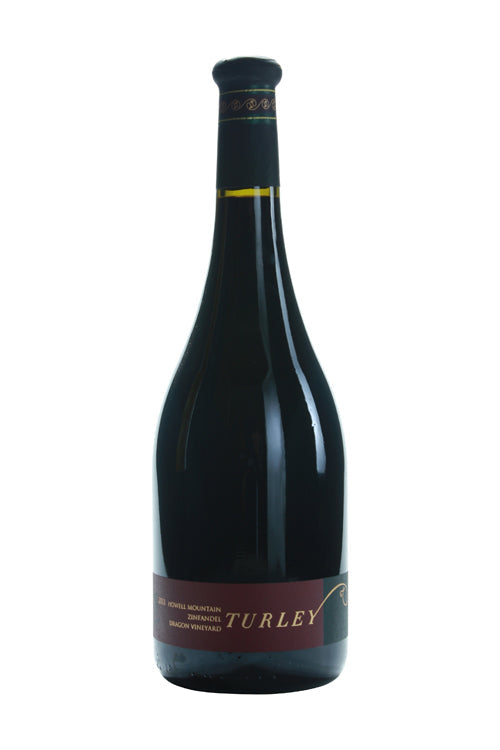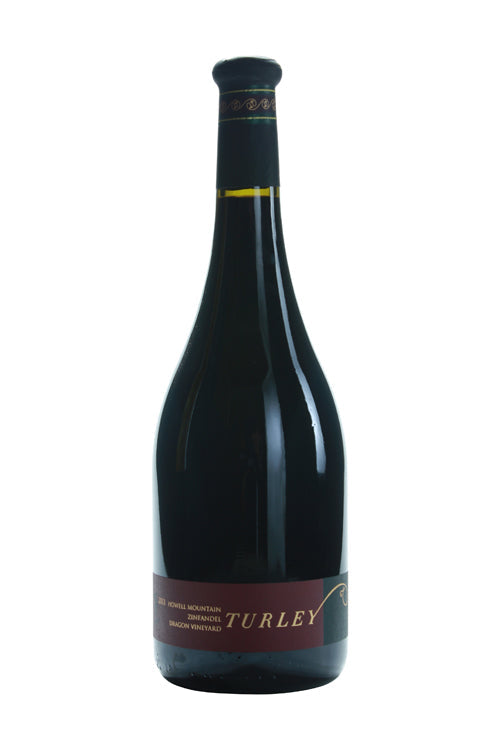1
/
of
1
Turley Dragon Zinfandel Howell Mountain - 2022 (750ml)
Turley Dragon Zinfandel Howell Mountain - 2022 (750ml)
Regular price
$69.99
Sale price
$69.99
Regular price
$98.99
Unit price
/
per
Availability:
1 In Stock
$25 Shipping on Orders +$299
Couldn't load pickup availability
Share :

- varietal
- Region
- Sub - Region
- Type
- Reviews
Product Review
The 2011 Zinfandel Dragon Vineyard stands out for its rich, layered personality. It isn’t among the most complex or nuanced wines of the year, but instead stands out for its generous, inviting personality. Ideally, the 2011 needs a few years to drop some of its baby fat, something I never thought I would say about a wine from this challenging harvest. Anticipated maturity: 2013-2021. Antonio Galloni, Wine Advocate #204 Dec 2012.
Product Score
92
For a long time, Zinfandel's history has been much disputed. Originally thought to be a descendant of Puglia's Primitivo in southern Italy, extensive DNA profiling by UC Davis have established that Primitivo and Zinfandel are actually offspring of Crljenak Kaštelanski, a virtually extinct variety recently identified on the Croatian island of Kaštela. Planted widely by miners turned farmers in California’s gold rush, it thrived in the warm, sunny, and dry conditions. While it grows well across most of California, some of the finest examples come from Sonoma, Paso Robles and the Sierra Foothills in particular. A good Zin should be bursting with big, ripe, jammy fruit, peppery spices and have good levels of tannin and acidity giving it backbone and structure.
California is one of the most diverse wine producing regions of the world. Although it has a history spanning over 200 years, it has experienced most of its growth in the last fifty years. The regions of Napa Valley and Sonoma County have become as renowned as France’s Bordeaux and Burgundy. While Cabernet Sauvignon, Pinot Noir, and Chardonnay are by far the most popular fine wine varieties, producers in the Golden State have also experimented with an unparalleled array of diverse varieties, including Zinfandel, Syrah, Nebbiolo, Sangiovese, and Tempranillo.
The country’s most famous wine producing region, Napa Valley stretches from the North bay of San Francisco Bay in the South, all the way up to Mount Saint Helena in the North. Although the climate is suitable for a wide range of varieties, Cabernet Sauvignon is dominant and practically synonymous with the region. To account for its geographical diversity, the valley is split up into a number of AVAs. From north to south, the valley consists of Calistoga, St. Helena, Rutherford, Oakville, Yountville, and Oak Knoll. Higher elevation sites include Howell Mountain on the east and Mount Veeder on the west. On its own, Stags Leap District is tucked into the very south east corner of the valley.
Red wine is wine made from dark-coloured grape varieties. The color of red differs based on the grapes variety or varieties used.Interestingly, black grapes yield a juice that is greenish-white. The actual red color comes from anthocyan pigments (also called anthocyanins) from the skin of the grape (exceptions are the relatively uncommon teinturier varieties, which produce a red colored juice). Most of the production centers around the extraction of color and flavor from the grape skin.


